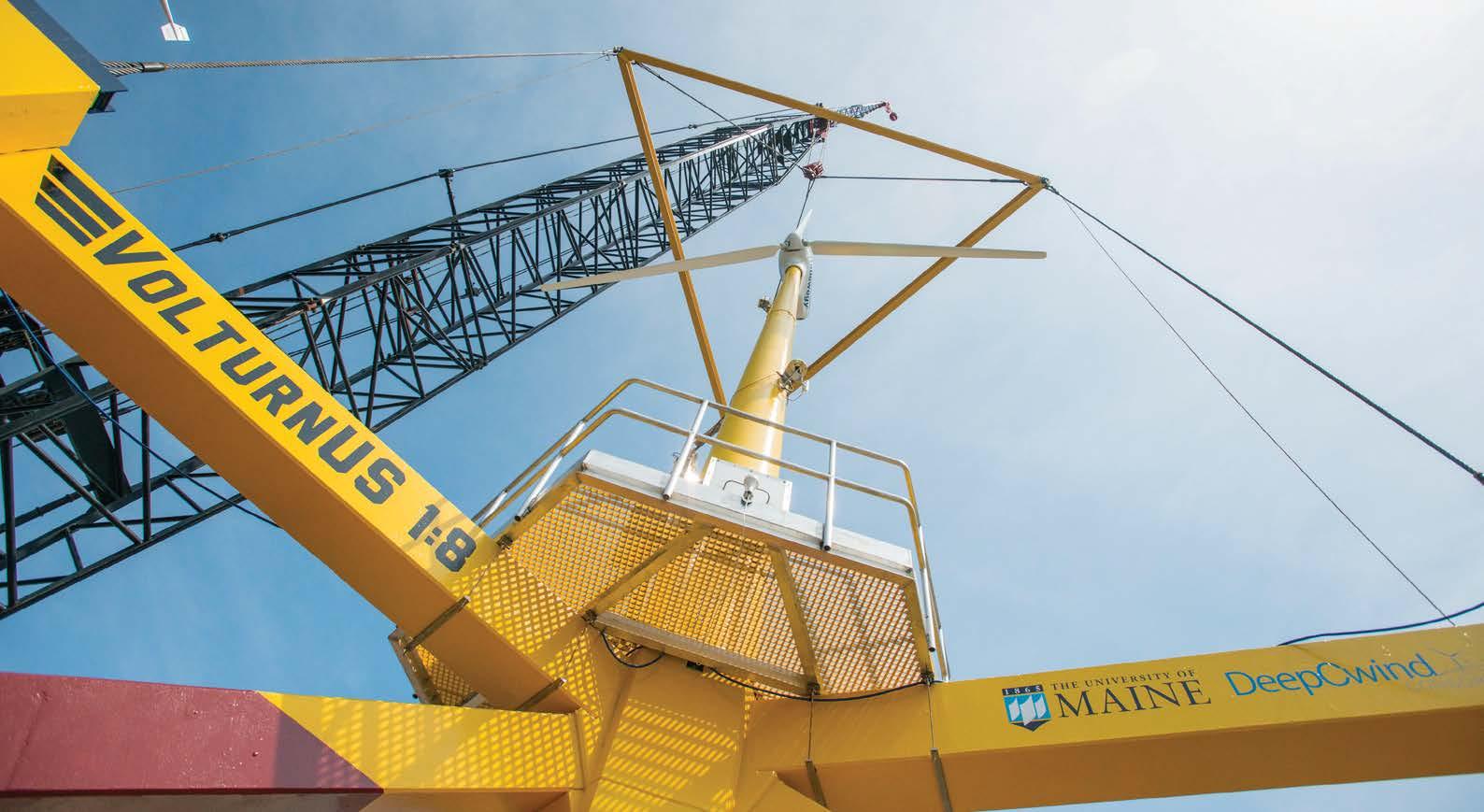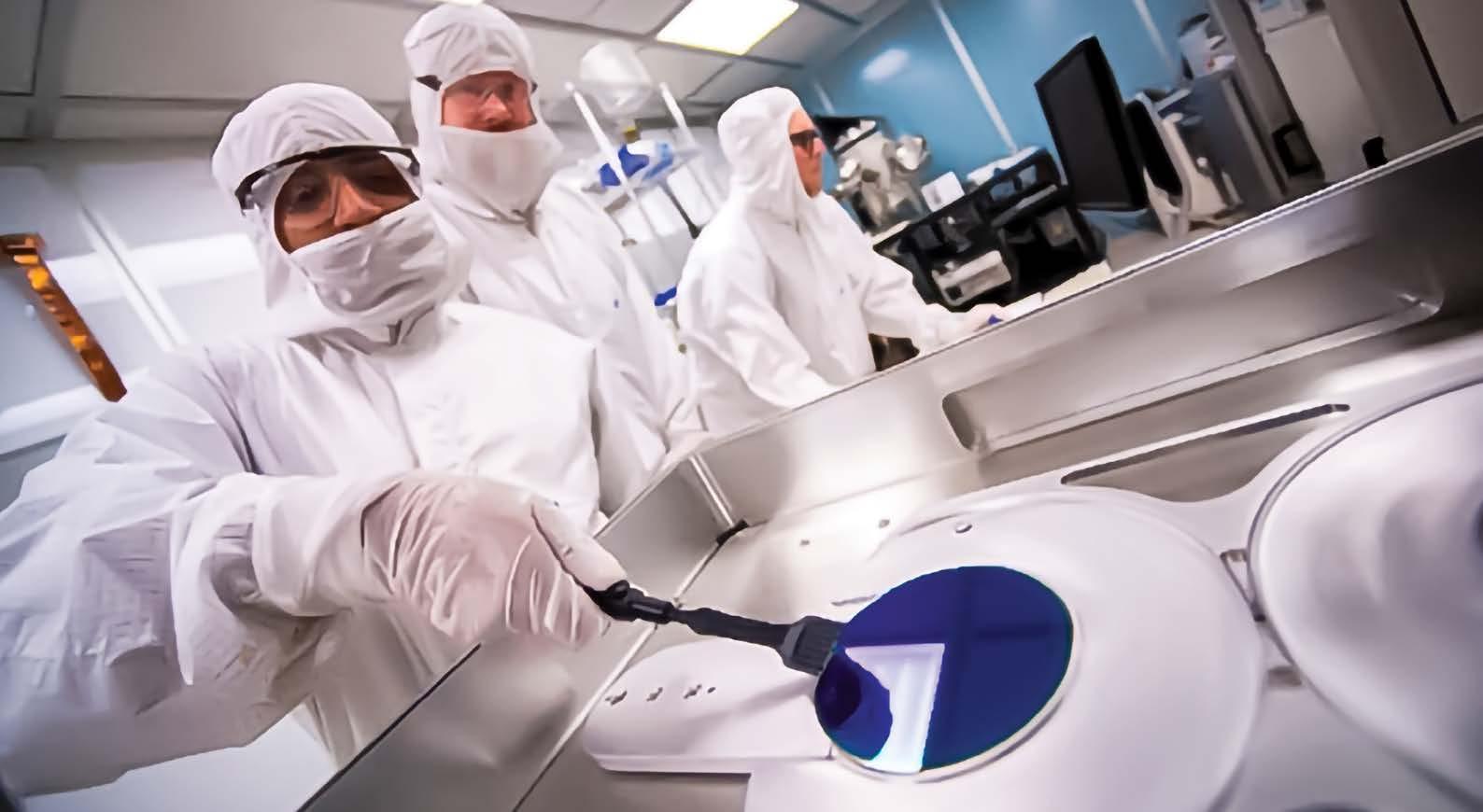
7 minute read
are NSF EPSCoR RII Track-2 Focused EPSCoR Collaborations (FEC) awards, which create
August 2019 – July 2023 (estimated)
NSF EPSCoR RII Track-2 Focused EPSCoR Collaborations (FEC) awards build interjurisdictional collaborative teams of investigators in scientific focus areas consistent with NSF priorities. Projects are investigator-driven and must include researchers from at least two eligible jurisdictions with complementary expertise and resources necessary to tackle those projects.
Project Leadership:
• PI: Michelle Greene (Bates) • CoPI: Benjamin Balas (North Dakota State University) • CoPI: Paul MacNeilage (University of Nevada) • CoPI: Mark Lescroart (University of Nevada)
Award Amount: $2,004,695 (to date)

Student researcher Hanna De Bruyn ’18 (far left) works with Assistant Professor of Neuroscience Michelle Greene to prepare an EEG test in March 2018. (Phyllis Graber Jensen/Bates College)
Bates College received a four-year, $3.97 million grant from the National Science Foundation in order to create a groundbreaking Visual Experience Database (VED) to support research in fields that rely on the analysis and recognition of images, such as neuroscience, cognitive science, and artificial intelligence. The project, which is the largest federal grant to ever be awarded to Bates, is titled “The Visual Experience Database: A LargeScale Point-of-View Video Database for Vision Research” and is led by Michelle Greene, an assistant professor of neuroscience at Bates who specializes in researching how the brain makes sense of what it sees. The co-principal investigators are Benjamin Balas (neuroscientist and associate professor of psychology at North Dakota) and Paul MacNeilage and Mark Lescroart (neuroscientists and assistant professors of psychology at the University of Nevada).
The project is working to create an expansive gallery of videos that depict what, and how, people

—Michelle Greene see as they go about daily activities. Current artificial intelligence (AI) systems that recognize visual content require millions of training examples in order to achieve optimal performance. However, the databases used to train such systems often take photos and videos from the internet, which do not necessarily represent the actual content people see on a daily basis. This creates substantial biases within the AI systems that can have serious implications.
The VED created by this project will contain over 240 hours of video shot from the diverse perspectives of a wide variety of observers engaged in common, everyday activities such as shopping, eating, or walking. By enlisting diverse observers local to each of the three participating institutions, the project will record how changes in environment, age, and task affect the act of looking.
Innovation in artificial intelligence, in particular, stands to benefit from the VED. Model systems in computer vision “are very data-hungry,” said Greene in a release from Bates. “They tend to require tens of millions of images, and have been downloading these tens of millions of images from the internet. We will now give them tens of millions of images that are more representative of daily-life experience.”
The primary goal of this project is to make the database open and accessible to the public. Project personnel will release a suite of software tools for using the database and implement a “Big Data Skills” workshop in basic computer programming skills to help grow a workforce that is prepared for a variety of scientific occupations. By making the database open to the public, the project will enable scientists, historians, and even artists to benefit from the VED.
Undergraduates at all three schools, including 28 at Bates over the four-year grant period, will participate in the research. Among other roles, these students will serve as videographers, creating assets for the VED.
“If we can take the next generation of students and give them the best skills, the kind of experience I wish I’d had as a student early on, that is a key part of the workforce development component of the grant,” Greene said. n

RII Track-4: Advanced Control Strategies for Floating Offshore Wind Farms
October 2018 – September 2021 (estimated)

NSF EPSCoR RII Track-4 awards provide opportunities for non-tenured investigators to further develop their individual research potential through extended collaborative visits to the nation’s premier private, governmental, or academic research centers. During these visits, the EPSCoR Research Fellows learn new techniques, develop collaborations, benefit from access to unique equipment and facilities, and/or shift their research toward transformative new directions. These benefits to the Fellows are expected to improve the research capacity of their institutions and jurisdictions more broadly.
Project Leadership:
• PI: Andrew Goupee
Award Amount: $96,275
Clean energy from solar, wind, and water Goupee’s specific research aims to develop a are necessities for a sustainable future. more resilient and effective control strategy that But sometimes, sustainability isn’t just would enable offshore wind turbines to harness more about what is good for the environment, but what energy and reduce fatigue loads, thus extending their is economically feasible for countries and regions service lives. Goupee recognizes that despite his that invest, manufacture and export the technology extensive knowledge in offshore wind turbines he required to produce that clean energy. gained from working at the UMaine Advanced Andrew Goupee, an Assistant Professor of Structures and Composites Center for ten years, Mechanical Engineering at the University of Maine, he was no controls guru. has been working on improving that economic feasibility through his research in offshore wind Photo taken prior to COVID-19. turbines. In the summer of 2019, Goupee and his graduate student, Eben Lenfest, traveled under their awarded EPSCoR Track-4 grant to the National Renewable Energy Laboratory’s (NREL) National Wind Technology Center (NWTC) in Boulder, Colorado, which is one of the premier wind energy, water power, and integration research facilities in the United States. There, Goupee and Lenfest learned new techniques, developed key collaborations, and expanded their understanding of the specific control systems needed to maintain an efficient offshore wind turbine. Conventional offshore wind turbine practices exist in areas of shallow water where fixed-bottom technologies can be employed. The state of Maine is poised with an expansive natural resource in offshore wind, but local coastal waters are too deep “When I worked as staff at the composite for conventional technologies. To combat this, center, I was their go-to numerical model person, so Goupee, Lenfest and other researchers at UMaine are when you design a wind turbine and want to know developing new, offshore wind technologies that are what’s going on, you use these fairly sophisticated compatible with deepwater locations. While this pieces of software that simulate what goes on in practice would allow for high levels of energy everyday application or extreme events, to help you capture, it also presents challenges in terms of understand the behavior of the system so that you motion instabilities that increase structural loads can design it properly,” explains Goupee. “Since on the turbine. moving away from the center and taking on a faculty role, where I do grading and lectures, I was pretty out of touch with the current software. But [in Colorado], I got to dive into the latest software called OPENFAST, and I got to spend a lot of time coming up to speed.” The NWTC also provided Goupee and Lenfest opportunities to expand their network and learn new skills.
“Some of the techniques we developed are a natural fit for the research we do,” says Goupee. “One example is wind turbine power regulation controls, which is challenging because standard wind turbine controls can destabilize the floating platform. We are developing a framework to understand this behavior and then tune them for the improved energy capture and platform motion performance.” Goupee and Lenfest have also jumped on new opportunities to expand their funding and take on new projects related to their research. Experts and collaborators at the NWTC worked with Goupee to aid in submitting proposals for awards from the U.S. Department of Energy, NASA, and Advanced Research Projects Agency-Energy (APRA-E). Since submitting those proposals UMaine has secured over $2 million in funding to progress floating wind turbine controls related research. “We put in a pile of proposals and several of them have been funded, two from ARPA-E, which is all about controls and code design for floating offshore wind turbines,” says Goupee. “With this EPSCoR Track-4 experience, we gained enough knowledge to help inject that into our proposals.”
The Track-4 grant funds two summers worth of travel, and thus, Goupee and Lanfest intend to return to the NWTC to continue their collaborations and expand their knowledge on floating offshore wind turbine control systems once travel restrictions related to COVID-19 allow. n







